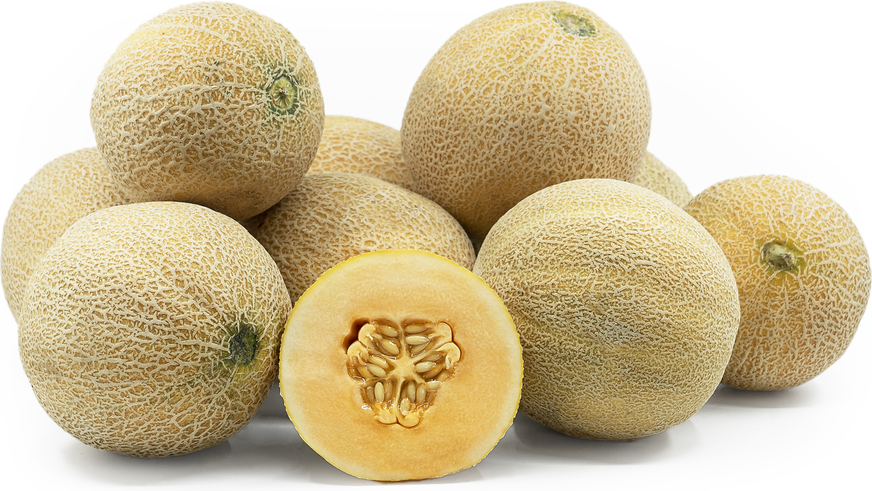


Baby French Melons
Estimated Inventory, ea : 0
Description/Taste
Baby French melons are distinguished by high sugar content and petite size, averaging 10 centimeters in diameter and 1 to 2 pounds in weight. Their textured outer rind is thin and perfumed with tropical fruit and floral aromatics. The coral-colored inner flesh is firm yet succulent. When perfectly ripe the fruit's flesh produces juice with a syrup-like consistency which contributes to its confectionery sweet flavors. The fruit bears a small tight central seed cavity that may be easily scooped away. Baby French melons will continue to ripen off of the vine.
Seasons/Availability
Baby French melons are available during the summer.
Current Facts
The Baby French melon is the hybrid result of crossing an Anana melon with a Charentais melon. A member of the Cucurbitaceae family the Baby French melon is a true muskmelon type, a cultivator group of melons in the muskmelon group that are well known for their netted exterior skin and sweet musky aroma. In America the Baby French melon, as well as other similar netted melon types, are often mistakenly classified as cantaloupes for commercial marketing, when in reality they are botanically muskmelons.
Nutritional Value
Baby French melons are a good source of beta-carotene, folic acid, potassium, vitamin C and dietary fiber.
Applications
Baby French melons may be used similarly to muskmelon or cantaloupe, offering a convenient personal-sized serving portion. They are best used in raw preparations, and appropriate for both sweet and savory dishes. They can be used as a breakfast fruit, as a salad ingredient or pureed into a chilled summer soup. They also make a great addition to both drinks and desserts. Baby French melons pair well with stone fruit, figs, feta and goat cheeses, almonds, pistachios and hazelnuts, fresh herbs such as arugula, mint and basil, citrus and cured pork such as proscuitto and pancetta. Once ripe, keep refrigerated until ready to use.
Geography/History
Baby French melons' heritage can be traced to the Charentais region of France, where the warmer climate of southern France is one of the most favorable regions for growing melons. It has been documented that the French were the first to cultivate netted melons. They referred to melons as "sucrins" which, fittingly, means "sugar". The Charentais was developed as a refined muskmelon, free of natural and highly occurring blemishes and warts of its parent varieties. The Baby French melon inherited these attributes, thus it readily withstands nature's elements and the potentially taxing damage of shipping from farm to market. Baby French melons yield best harvests in warm Mediterranean climates during hot dry summer months.
Recipe Ideas
Recipes that include Baby French Melons. One
| eCurry |
|
Melon Boats |
| eCurry |
|
Melon Fruit Bowl |
| The Edible Perspective |
|
Seasonal Smoothie |
| Luci's Morsels |
|
Sweet + Spicy Grilled Cantaloupe |




